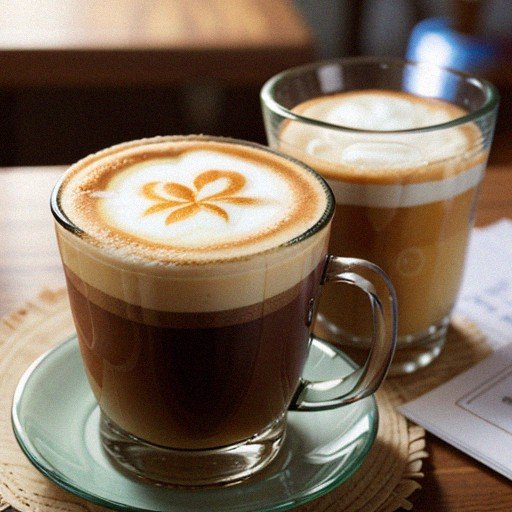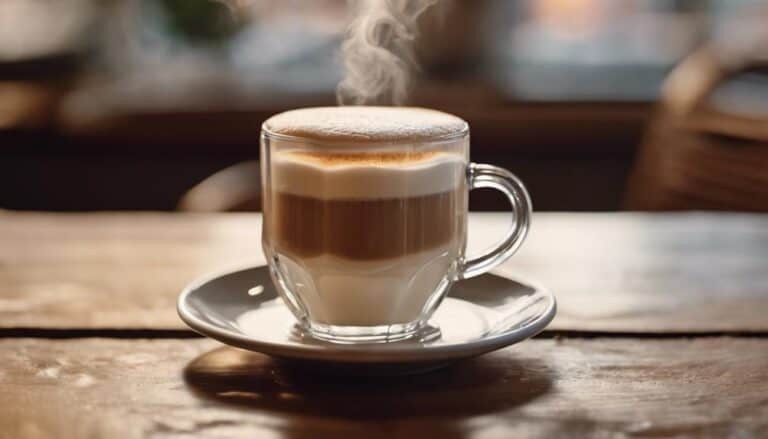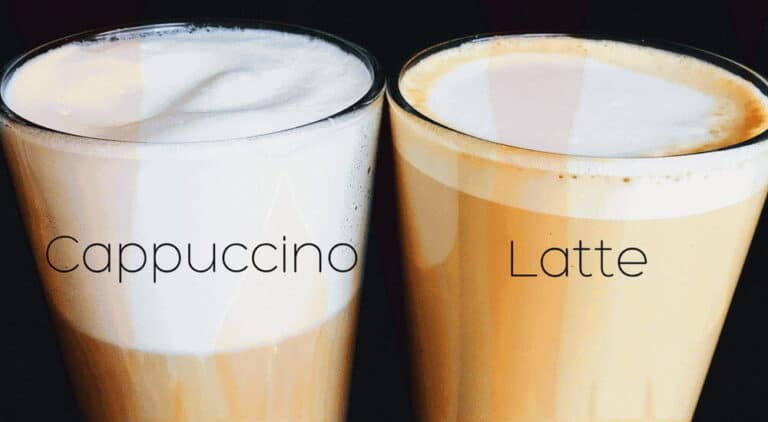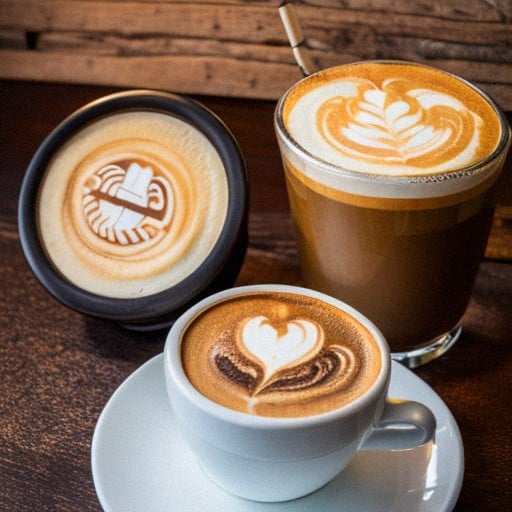Cappuccino vs Coffee: Understanding the Differences
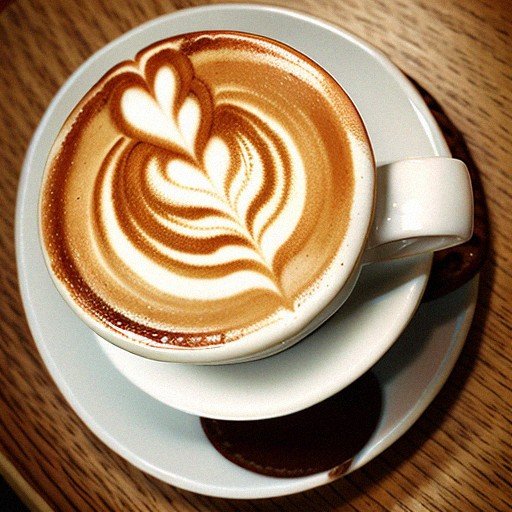
When it comes to caffeinated beverages, coffee and cappuccino are two of the most popular choices. While both of these drinks contain caffeine, they are quite different in terms of taste, preparation, and ingredients. In this article, we will explore the differences between cappuccino and coffee, and help you decide which one is right for you.
Understanding Cappuccino and Coffee Cappuccino and coffee are both made from coffee beans, but the way they are prepared is different. Coffee is made by brewing roasted, ground coffee beans with hot water. Cappuccino, on the other hand, is made with espresso shots and steamed milk. The milk in a cappuccino is frothed before it is added to the espresso, while coffee is just brewed with hot water.
Ingredients and Preparation The main difference between coffee and cappuccino is the milk. Cappuccino has more foam than coffee, and it is usually served in a cup. The ratio of cappuccino works out at one-third espresso, one-third milk, and one-third foam. Coffee, on the other hand, is usually served in a mug and has a higher caffeine content than cappuccino due to its composition.
Key Takeaways
- Cappuccino is made with espresso shots and steamed milk, while coffee is brewed from roasted beans.
- The milk in a cappuccino is frothed before it is added to the espresso, while coffee is just brewed with hot water.
- Coffee has a higher caffeine content than cappuccino due to its composition.
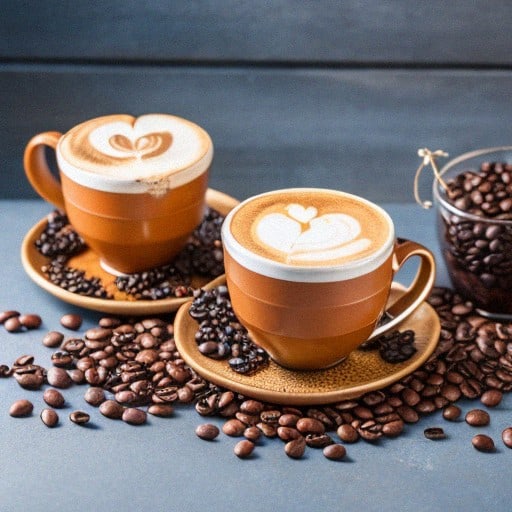
Understanding Cappuccino and Coffee
When it comes to hot beverages, two of the most popular choices are cappuccino and coffee. While both are made from coffee beans, they have distinct differences in terms of taste, texture, and preparation. In this section, we will explore the differences between cappuccino and coffee.
Coffee
Coffee is a popular beverage made by brewing roasted coffee beans. It can be served hot or cold and can be enjoyed plain or with cream and sugar. There are many different types of coffee drinks, including espresso, latte, and cappuccino.
Espresso is a concentrated coffee drink made by forcing hot water through finely ground coffee beans. It has a strong, bold flavor and is the base for many other coffee drinks.
Plain coffee, on the other hand, is made by brewing coffee beans with hot water. It has a milder taste than espresso and is often enjoyed with cream and sugar.
Cappuccino
Cappuccino is an Italian coffee drink made from espresso and steamed milk. It is typically served in a small cup and has a frothy layer of milk on top. Cappuccino is known for its rich, creamy texture and is often enjoyed as a breakfast or mid-morning drink.
To make a cappuccino, you start by making a shot of espresso. Then, you add steamed milk to the espresso and top it with a layer of frothed milk. The ratio of espresso, steamed milk, and frothed milk can vary depending on personal preference.
In America, cappuccino is often served in larger cups with more milk and less foam than traditional Italian cappuccino. This results in a milder taste and creamier texture.
Conclusion
In summary, both cappuccino and coffee are popular hot beverages made from coffee beans. Coffee is a brewed drink that can be enjoyed plain or with cream and sugar, while cappuccino is an Italian coffee drink made from espresso and steamed milk. Understanding the differences between these two drinks can help you choose the perfect beverage to suit your taste preferences.

Ingredients and Preparation
Cappuccino Ingredients and Preparation
Cappuccino is made with three simple ingredients: espresso, steamed milk, and milk foam. The double shot of espresso is brewed from finely ground coffee beans and extracted under high pressure. The steamed milk is heated and aerated using a wand on an espresso machine, creating a velvety texture. Finally, the milk foam is created by aerating the milk further, resulting in a light and airy foam that sits on top of the drink. The preparation method involves adding the espresso to a cup, followed by the steamed milk, and then the milk foam on top.
Coffee Ingredients and Preparation
Coffee, on the other hand, is made by brewing ground coffee beans with hot water. The preparation method varies depending on the brewing technique used, such as drip coffee, pour-over, or French press. The resulting drink is typically black coffee, which can be enjoyed as is or with additives such as sugar, cream, or milk.
Latte and Other Variations
Latte is a popular variation of cappuccino that includes more steamed milk and less foam, resulting in a creamier texture. Other variations of coffee include macchiato, mocha, and flat white, each with their own unique ingredients and preparation methods. Latte art is a popular technique used to decorate the top of the drink with intricate designs made from the milk foam.
Flavor and Texture
Cappuccino has a strong coffee flavor with a creamy and velvety texture from the steamed milk and foam. Coffee, depending on the roast and brewing method, can have a range of flavor profiles, from nutty and chocolatey to fruity and floral. The texture can vary as well, from smooth and silky to gritty and oily.
Additives and Sweeteners
Cappuccino is typically enjoyed as is, without any additives or sweeteners. Coffee, on the other hand, can be customized with a variety of sweeteners and flavorings such as sugar, cinnamon, syrups, chocolate, honey, and brown sugar.
Caffeine and Calories
Cappuccino typically has less caffeine than coffee due to the smaller size of the drink and the amount of milk used. However, the caffeine content can vary depending on the number of espresso shots used. Coffee has a higher caffeine content, but this can also vary depending on the brewing method and the type of coffee beans used. Cappuccino and coffee can both be enjoyed with low-fat milk for a lower calorie option.
Roasting and Brewing Methods
Coffee beans can be roasted to varying degrees, resulting in different flavor profiles and strengths. Brewing methods such as drip coffee, French press, and pour-over can also affect the flavor and texture of the resulting drink.
Health Benefits and Considerations
Both cappuccino and coffee can offer health benefits such as antioxidants and a boost in energy and focus. However, excessive caffeine consumption can lead to negative side effects such as jitters, anxiety, and insomnia. It’s important to consume caffeine in moderation and to consider any health conditions or medications that may interact with caffeine.
Cappuccino vs Coffee: The Differences
The main difference between cappuccino and coffee is the ingredients and preparation method. Cappuccino is made with espresso, steamed milk, and milk foam, while coffee is made by brewing ground coffee beans with hot water. Cappuccino has a creamier texture and a stronger coffee flavor, while coffee can have a range of flavor profiles and textures.
Popular Brands and Variations
Popular brands of cappuccino include Starbucks, Lavazza, and Illy. Popular variations of coffee include Americano, latte, and mocha.
Personal Preferences and Serving Suggestions
Personal preferences for cappuccino and coffee can vary depending on the time of day, mood, and sweet tooth. Cappuccino is typically enjoyed in the morning or afternoon as a pick-me-up, while coffee can be enjoyed throughout the day. Serving suggestions for cappuccino include a sprinkle of cocoa powder or cinnamon on top, while coffee can be enjoyed with cream or sugar.

